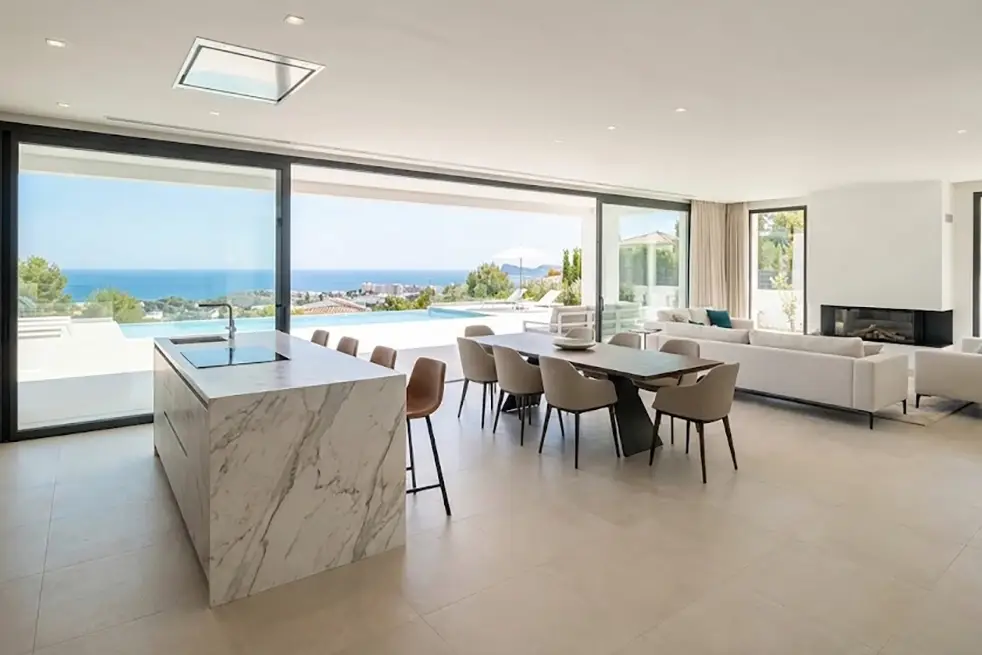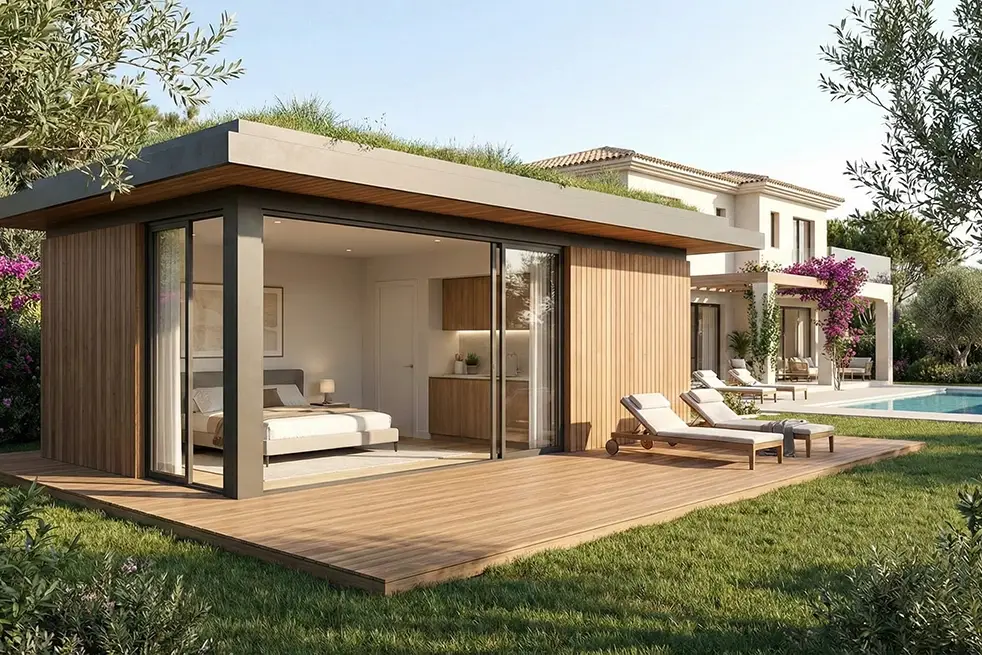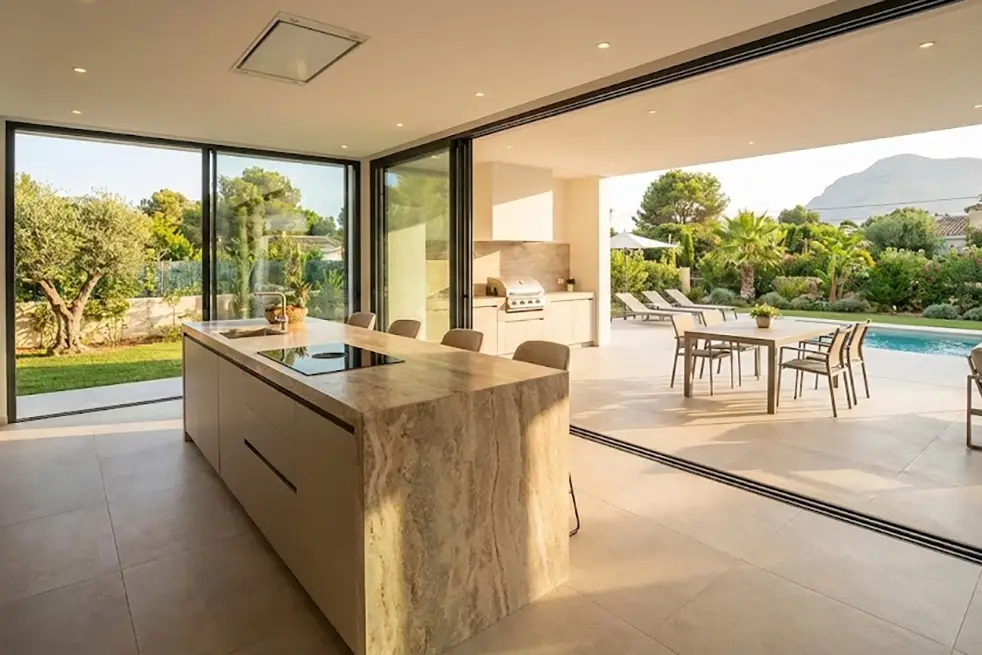Living by the sea has many benefits: breathtaking views, a mild climate, and a unique connection to nature. However, building or renovating a home in coastal areas also involves specific technical challenges. One of the most important is thermal insulation in homes near the sea.
The marine environment presents particular conditions: high humidity, salt exposure, constant wind, and moderate but steady temperature changes. As a result, good thermal insulation not only improves energy efficiency but also protects the structure, increases interior comfort, and extends the building’s lifespan.
In this article, we’ll explore the most common insulation mistakes in these types of homes and provide effective and realistic solutions.
Why is thermal insulation important near the sea?
Thermal insulation in coastal zones is not just about retaining heat in winter or keeping cool in summer. It also acts as a barrier against:
- Condensation caused by constant humidity
- Corrosion of materials due to salt in the air
- Wear and tear of external finishes from intense sunlight
- Energy loss leading to overuse of heating or cooling
- Exterior noise, such as wind or seasonal tourist traffic
Furthermore, a well-insulated property improves energy ratings and adds value to the home.
Common mistakes when insulating coastal homes
Despite its importance, it’s not uncommon to find insulation errors that reduce performance. Here are the most frequent:
1. Ignoring orientation and exposure
Often, insulation systems are chosen without assessing whether the home faces north, south, or directly towards the sea. The most exposed façades need reinforced solutions to withstand marine winds and constant moisture.
2. Using materials not suited to marine environments
Some standard insulation materials degrade quickly in salty, humid conditions. For instance, untreated mineral wool or basic polystyrene may absorb water or lose thermal efficiency.
3. Overlooking thermal bridges
Areas like structural columns, shutter boxes or window junctions often let heat escape or allow condensation and mould to form. This is usually due to poor design or outdated construction methods.
4. Neglecting roof and floor insulation
Many projects focus solely on wall insulation, forgetting that flat roofs and ground-level floors are also key in coastal climates.
5. Poor-quality windows without thermal break
It’s common to see coastal homes with large windows to enjoy the views—but with aluminium frames that lack thermal breaks or basic glazing. This leads to condensation, heat loss or overheating.
Effective and durable insulation solutions
Fortunately, there are many modern systems that ensure good insulation—even in demanding marine environments.
1. External Insulation Systems (ETICS/SATE)
ETICS involves fixing insulating panels directly to exterior walls and covering them with a protective finish. Benefits include:
- Reduces thermal bridges
- Shields the structure from the elements
- Improves the building’s thermal mass
- Offers a seamless, customisable appearance
It’s best to use graphite-enhanced EPS or water-resistant mineral wool, along with salt-resistant render finishes.
2. Ventilated roof insulation
In coastal climates, a well-ventilated roof prevents overheating and condensation. Options include insulated sandwich panels or multilayer systems with proper vapour control.
3. High-quality windows and glazing
Thermal-break windows are essential, with PVC or treated aluminium frames and double or triple glazing. In exposed homes, low-emissivity glass or argon-filled chambers add even more protection.
4. Floor and slab insulation
For floors in contact with the ground or unheated areas, use XPS insulation, which resists moisture well. Raised flooring systems or underfloor heating with integrated insulation can also be effective.
5. Sealing and airtightness
Even perfect insulation can fail if air or water infiltrates. It’s vital to seal all joints between materials, movement gaps, and shutter boxes. Use long-lasting, marine-grade sealants.
Architectural tips and recommendations
From our experience at La Quinta Fachada, here are some extra tips:
- Embrace bioclimatic design that promotes natural ventilation and shading
- Choose low-maintenance materials with good thermal properties, such as natural stone, lime render or ventilated façades
- Include overhangs, patios, shutters or latticework that protect from direct sun and allow airflow
- Ensure continuous insulation, avoiding patchy solutions that create thermal imbalance
- Always work with a qualified technical team to design and supervise efficient solutions
Protecting your home, enhancing comfort
Good thermal insulation in homes near the sea is more than a technical detail—it’s an investment in comfort, efficiency and durability. It prevents problems like moisture, mould or high energy bills, and lets you enjoy a comfortable home all year round.
At La Quinta Fachada, we design homes tailored to their environment, with technical solutions that ensure your coastal home is not only beautiful but long-lasting and energy efficient.




